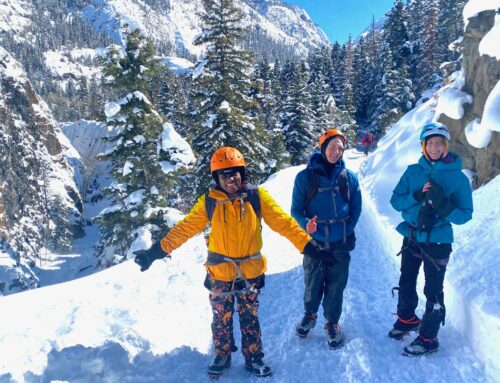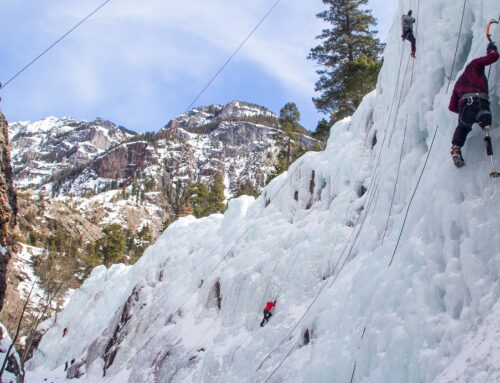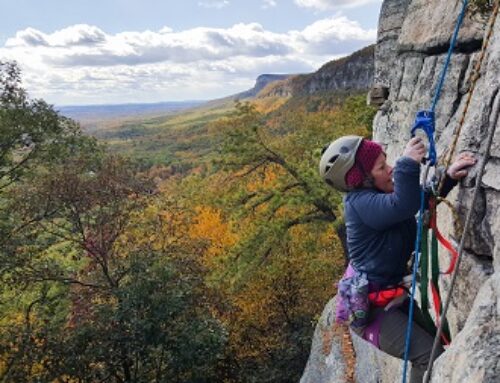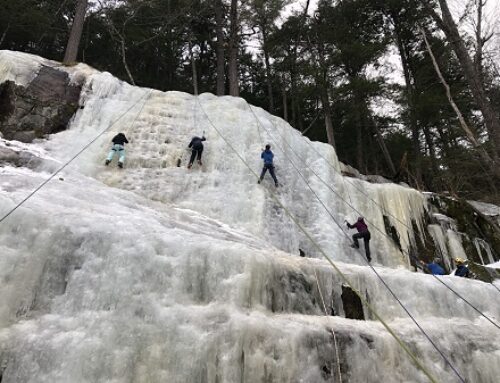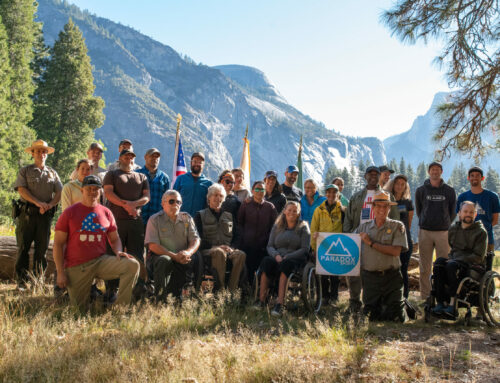Shelf Road: Paving the Path for Future Climbers
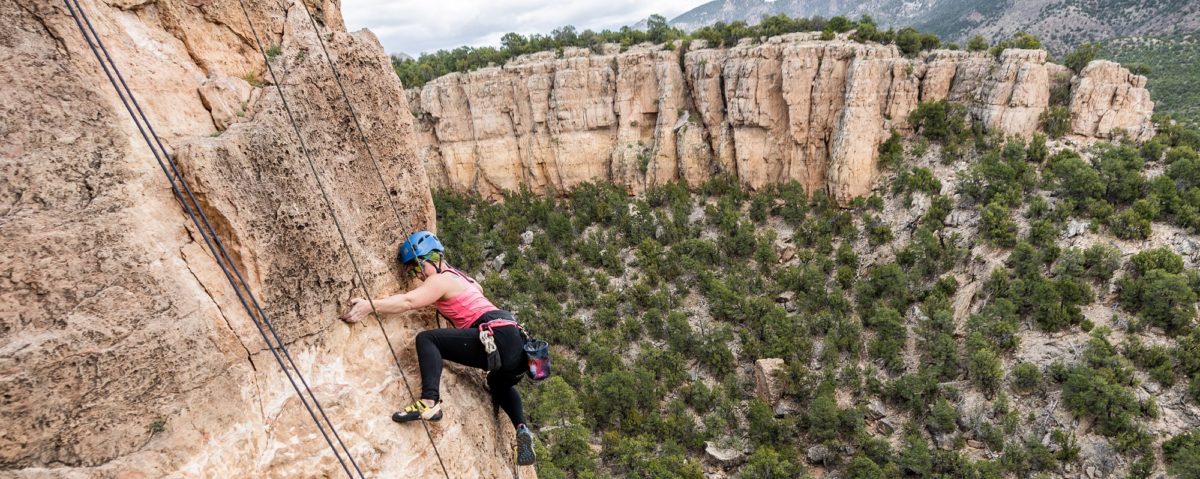
By Domenic Pascariello
National Program Manager
As you explore the climber trails below the vertical cliffs of Shelf Road in Colorado, you may notice an interesting collection of hardware adorning the walls. Routes that are decorated with chopped angle iron, spray painted orange to weather the desert environment of Colorado’s frontier. Next door, routes with home made cold-shuts spaced 15 feet apart. Momentos of times in the past when exploration and discovery were directly related to a climbers identity.
The 1980’s brought climbers Harvey Carter, Tom Eisenman, Art Wiggins, and Tom Austin to the gorgeous vertical limestone crags of Shelf Road for one reason- the crack climbing! Nearly a decade went by with climbers attempting to send the thin, chossy, widely dispersed crack lines on tradition protection before the shift in mentality that took place in the mid 80’s bolting frenzie. During this time the international climbing community was progressing towards an unprecedented change; bolting routes on rappel, or ‘top-down”. Previously, climbers would drill and hammer bolts into the wall while on lead from the ground. This incredibly taxing process was difficult to say the least. This meant run out climbing, clipping from less than ideal stances, and an exponential increase in danger for new route development.
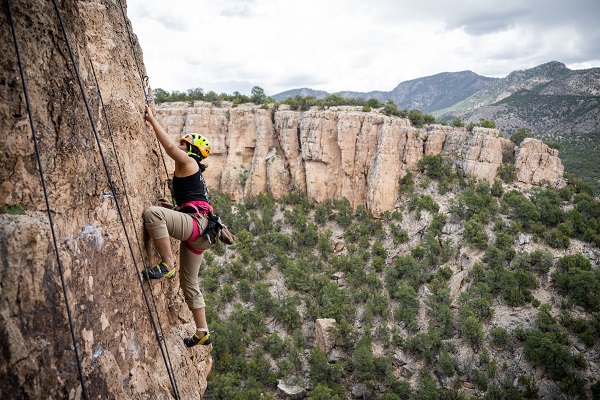 In 1986, Shelf saw the addition of its first route established top down. A 5.12b called “Glue Slippage” by Mike Johnson and Dale Goddard. This route can be visited on our Paradox Sports program when we climb at the Cactus Cliff climbing area, one of the first sectors to see a bombardment of new routes in ‘86. Shortly after, the first route was established with a power drill, taking just a fraction of the time. Appropriately named, ‘Welcome to the Machine’.
In 1986, Shelf saw the addition of its first route established top down. A 5.12b called “Glue Slippage” by Mike Johnson and Dale Goddard. This route can be visited on our Paradox Sports program when we climb at the Cactus Cliff climbing area, one of the first sectors to see a bombardment of new routes in ‘86. Shortly after, the first route was established with a power drill, taking just a fraction of the time. Appropriately named, ‘Welcome to the Machine’.
During this time, Shelf began to increase in popularity throughout the front range of Colorado and beyond. Climbing Magazine caught wind of the newly defined mecca, and began to write a piece highlighting the ‘french style’ of the area. Safe, convenient, and difficult. A new wave of climbers had joined in on the fun, as highlighted by this excerpt from “The History of Rock Climbing in Colorado”.
“One chilly morning, a large group including Colin Lantz….and the Climbing Magazine crew of Michael Kennedy, Mike Benge, and John Steiger were standing around a campfire. All were clad in the climbing attire of the day. At the crest of the hill appeared a rider, Robertson, clad in Carhartts, hat pulled low, herding cattle through the juniper and sage. He looked up and beheld the gaggle of a dozen climbers, their skinny legs psychedelic in a dozen neon hues of skin-tight Lycra. Robertson’s expression told all.”
The next few years became an all out bolting revolution. Over 350 routes were established between the first ascent of Glue Slippage, and the release of the first official Shelf Road guide book in 1990 published by Mark Van Horne. Some more responsibly bolted than others. As climbers continued to push into new areas, their pockets began to push back. Leading to less bolts on ‘easier’ sections, and homemade hardware that would make modern day gear manufacturers cringe.
One climber who refused to put others at risk with shotty home-made gear was Collin Lantz. Living in a renovated chicken coop with no heat, Collin made the decision that if he was going to bolt a route, he would do it right. He subsequently established a 5.13 with shiny new bolts and hardware and named it “The Example”. His hope was to encourage others to follow his lead, and protect the future generations of climbers from unnecessary injury or gear failure.
Since the 80’s Shelf Road has seen a massive overhaul in regards to the bolting quality and overall visitor experience. Routes are now re-bolted with assistance from the ASCA, and the Bureau of Land Management has taken ownership of the campground and vault toilets. This partnership building between landowners and climbers was one of the first of its kind – paving the way for future climbing areas in the United States. This well mannered political environment led to the Access Fund purchase of land that was off previously off limits to climbers, expanding the area of Shelf dramatically. The current route count is 1150+ and still growing. Once seen as a weekend destination for hardcore climbers, Shelf Road now sees hundreds of visitors each weekend climbing routes from 5.6-5.14. So come join us on our next trip to this historic destination!
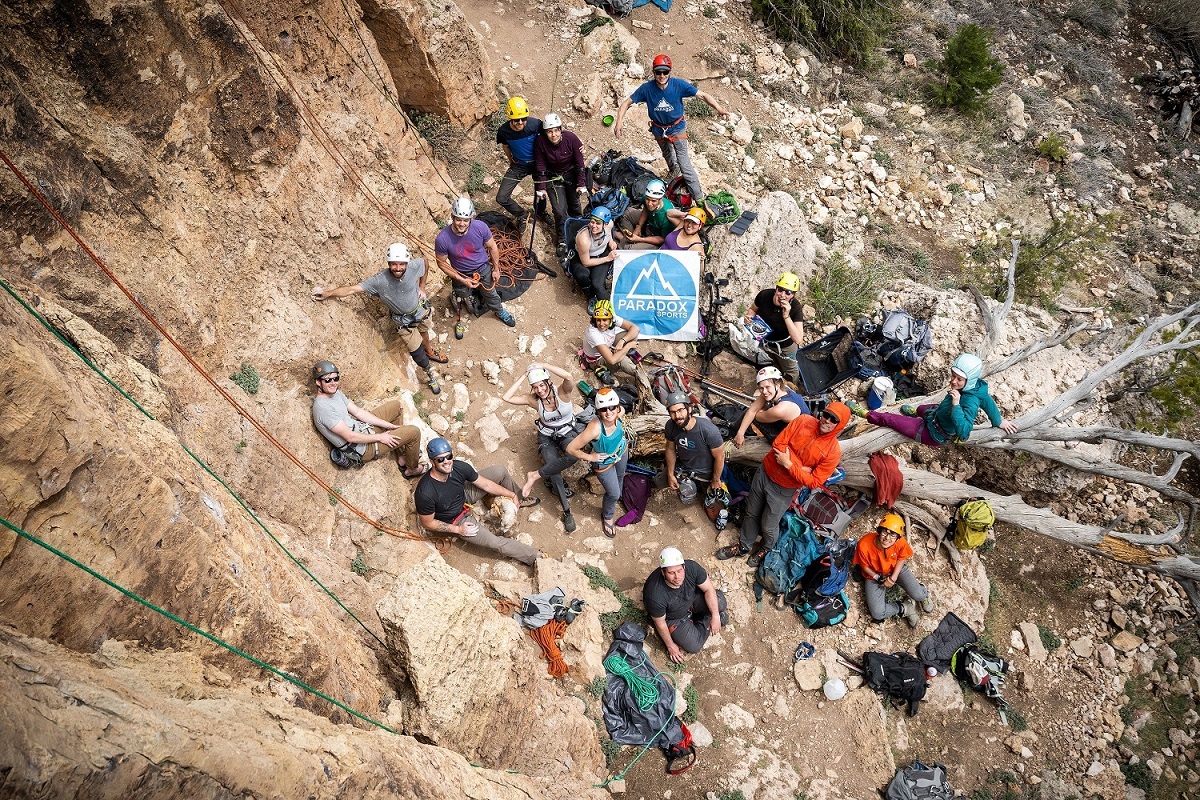
Due to Coronavirus and COVID-19, we will be postponing all remaining spring programs, including our Shelf Road climbing trip, which was scheduled for May 15-17. We have tentatively rescheduled this trip for September 25-27, please stay tuned for new updates.
Our focus remains on our community and mission and we have enjoyed connecting with all of you these past weeks. However, we certainly prioritize local, regional and global health and remain committed to government mandates. Until we are able to climb again, stay healthy, reach out and we look forward to climbing with you all soon.

 In 1986, Shelf saw the addition of its first route established top down. A 5.12b called “Glue Slippage” by Mike Johnson and Dale Goddard. This route can be visited on our Paradox Sports program when we climb at the Cactus Cliff climbing area, one of the first sectors to see a bombardment of new routes in ‘86. Shortly after, the first route was established with a power drill, taking just a fraction of the time. Appropriately named, ‘Welcome to the Machine’.
In 1986, Shelf saw the addition of its first route established top down. A 5.12b called “Glue Slippage” by Mike Johnson and Dale Goddard. This route can be visited on our Paradox Sports program when we climb at the Cactus Cliff climbing area, one of the first sectors to see a bombardment of new routes in ‘86. Shortly after, the first route was established with a power drill, taking just a fraction of the time. Appropriately named, ‘Welcome to the Machine’.


